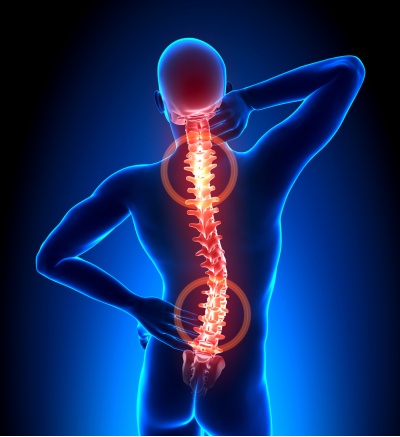
Spinal diseases occupy a leading position on the prevalence in the world. For example, only herniated suffer 25% of the world population .This could be due inactive and sedentary lifestyle of modern man, in which the spine is experiencing heavy loads occur it degenerative dystrophic changes. In this regard, WHO had even declared the first decade of the XXI century " Bone and Joint Decade." In Russia morbidity statistics in this area is even more serious concerns . In 2002, the results of clinical examination of the child population of the Russian Federation showed a mass pathology of the musculoskeletal system in children and adolescents under 12 years. At preschool age dysfunctions of the spine was found in 30% of children . In high school students , this figure was 95%.
Spine treatment in Germany every year attracts tens of thousands of patients , including the EU, USA and Russia . First of all, this is due to the high level of professionalism of German medicine , its funding at the state level , a lot of experience of local doctors. Every year, the German health care system allocates 11% of gross domestic product to ensure the needs of medicine, performed all kinds of operations and manipulations known to modern science . System of training of each individual specialist in spine treatment provides long-term gradual accumulation of experience as a physician assistant , before he proceeds to independent practice. Attractive for foreign patients is the fact that the rigid system of price controls in Germany for medical services , both in public and in private clinics , is a guarantee that the cost of treatment will not be overstated.
In trauma and neurosurgical clinics countries are highly accurate diagnosis and effective treatment of various diseases of the spine fracture of the vertebral body , tumors of the lumbar , cervical or thoracic vertebrae shift , plexitis posttraumatic spinal cord injuries , herniated disks and other disorders.
Precision diagnosis and treatment of the spine in Germany can achieve recovery of patients in most cases. Various diagnostic methods , such as computed tomography (CT ) , magnetic resonance imaging (MRI) , myelography , ultrasound ( U.S.) allow experts to assess the condition of the patient , select the most appropriate methodology and scope of intervention , if necessary surgery. In this surgery , for example in the treatment of herniated discs , use only 10-15 % of patients with this diagnosis , and only after a long period of conservative treatment was unsuccessful or if there is severe neurological disorders in a patient.
For surgical treatment of the spine , in particular hernia, almost all the clinics of Germany applies microsurgical technique and various endoscopic techniques which allow to carry out the operation with minimal damage to surrounding tissue .And the use of intra-operation computer scanning , the use of neuronavigation system greatly improves the efficiency and accuracy of neurosurgeons.
For the treatment of the spine ( herniation ) in Germany used a technique of endoscopic discectomy , laser decompression nucleotomy , hemonukleoliz (dissolution of the body directly herniated disc , followed by suction her) biological update intervertebral disc ( conducted in two stages ) , intervertebral disc prosthesis - is produced in the most severe cases.
In the German leading clinics run massively complex medical diagnostic and surgical methods of treatment. And the best guarantee of high quality medical treatment in Germany - a national and international accreditation of medical institutions. Germans alone habit transmitted by inheritance, to comply throughout the procedure , makes patients from many countries to opt for treatment in Germany .

